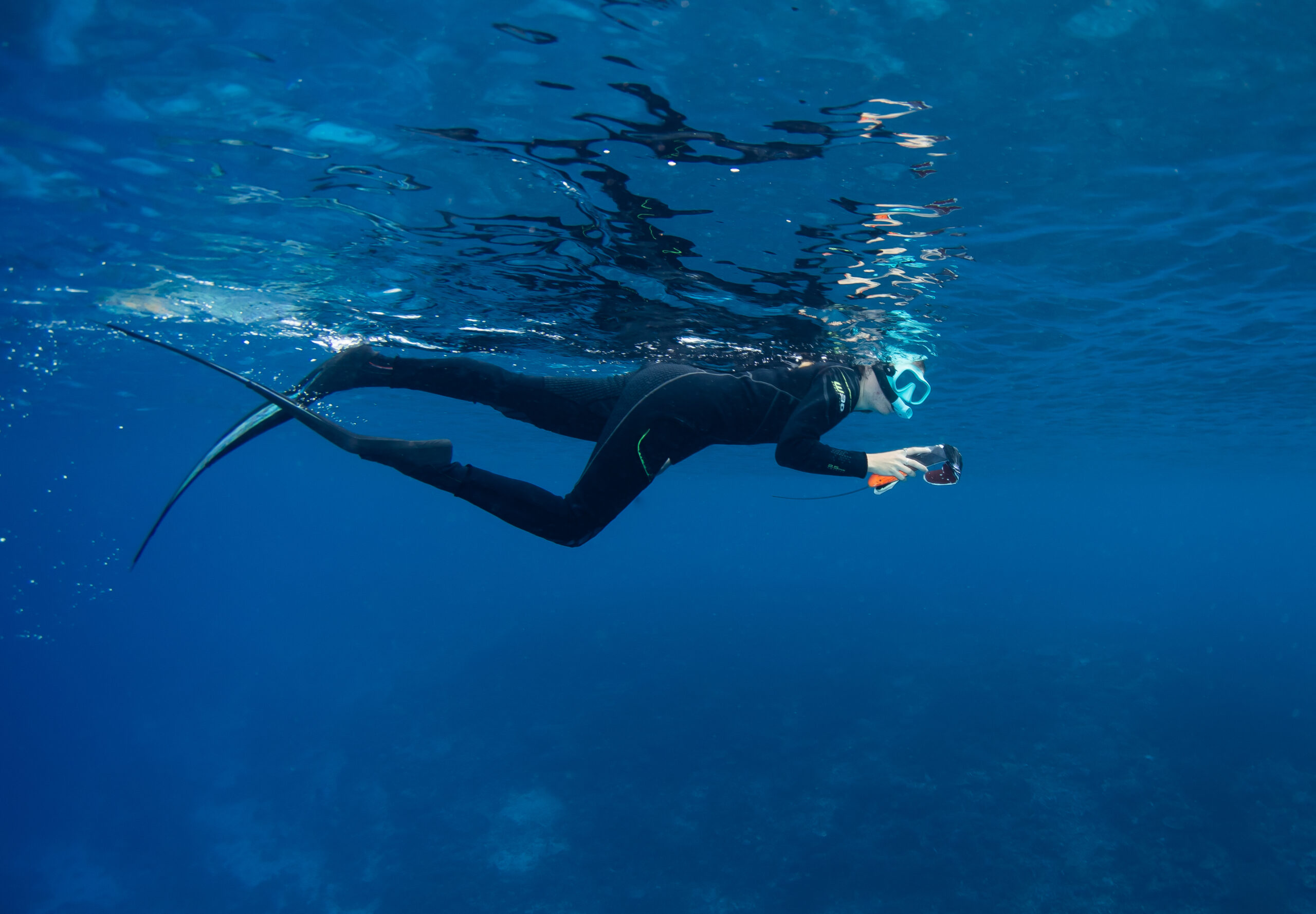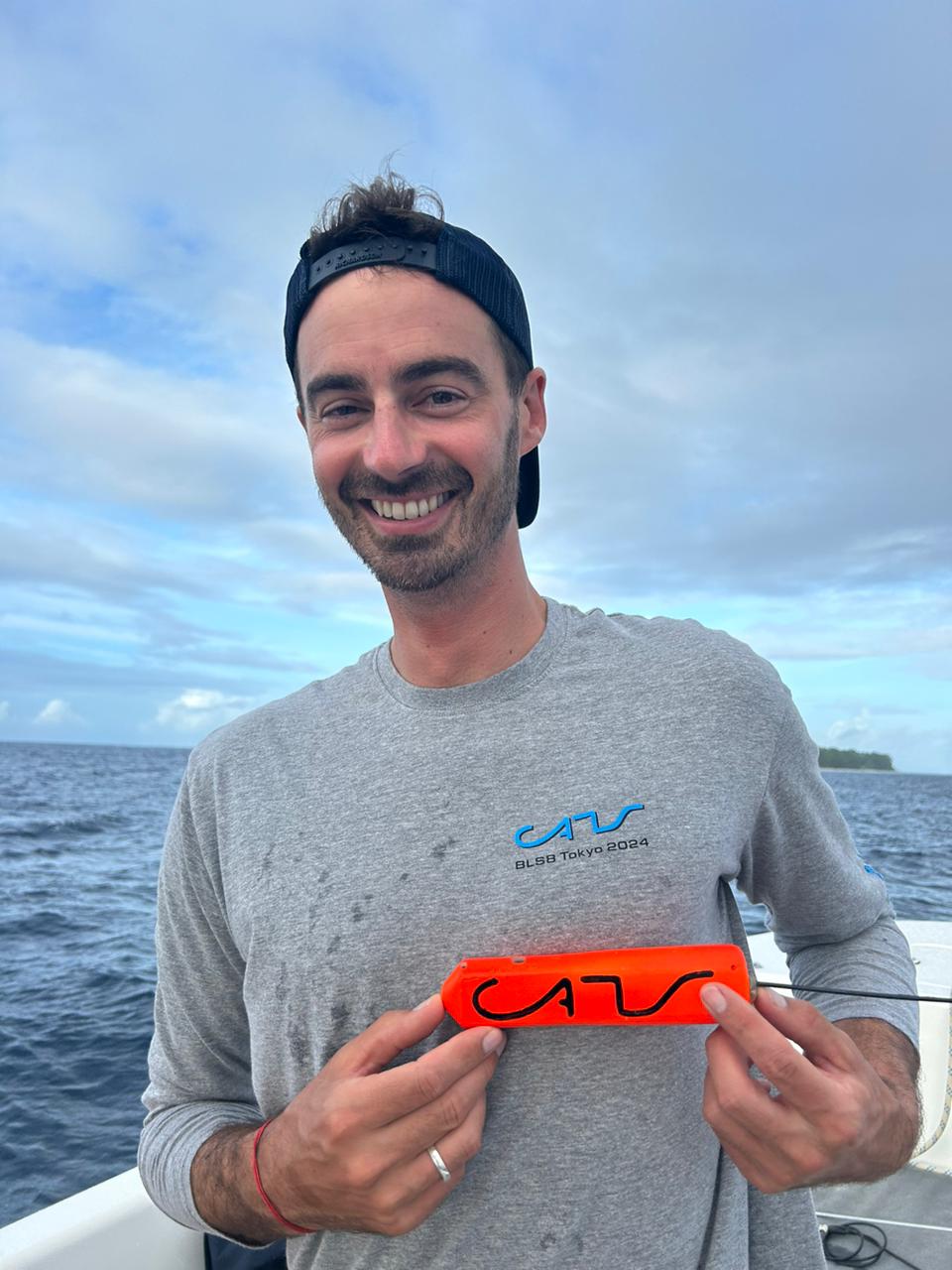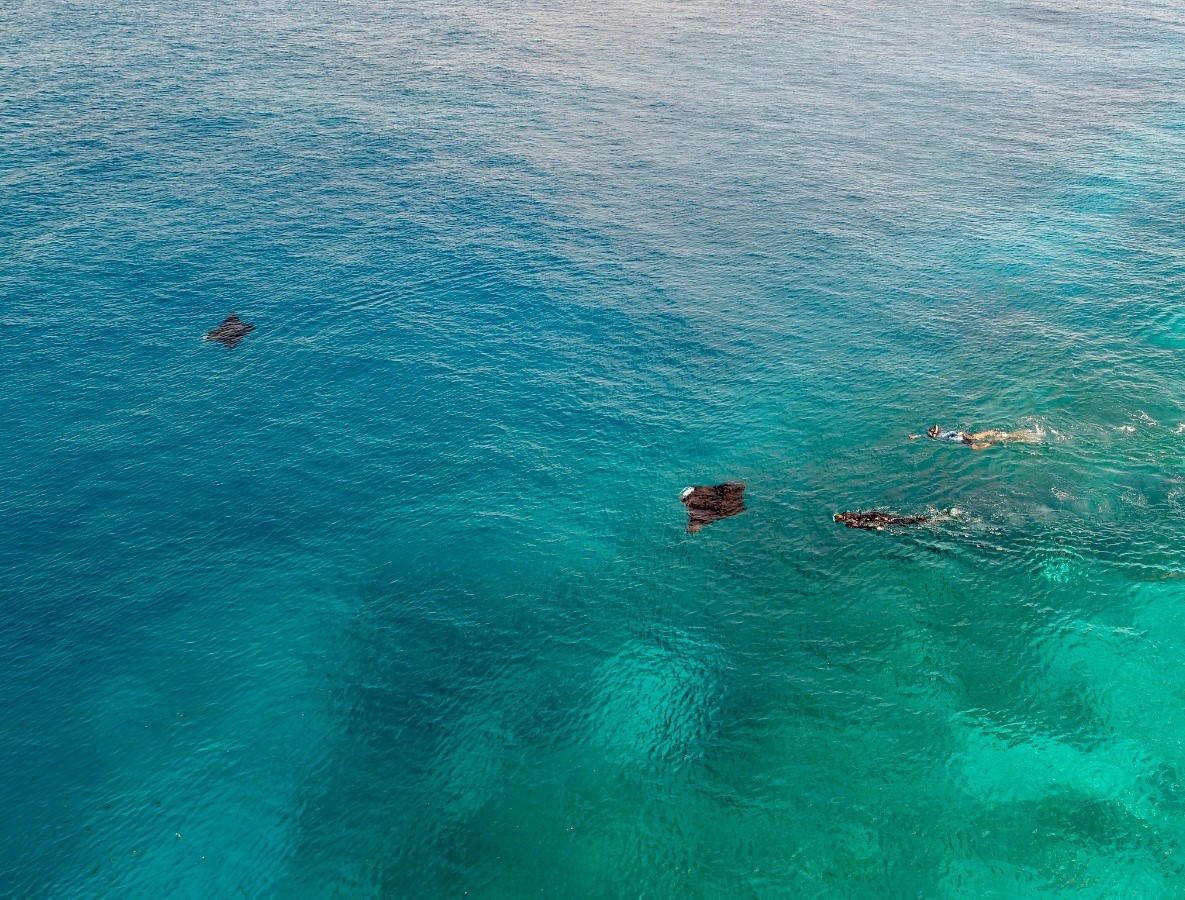A letter in perseverance
We have all had experiences where we planned a lovely picnic under clear, sunny skies and then the weather turned unpredictable – wind, rain and suddenly our picnic plans are ruined. We also know that when we go out on a nature safari, hoping to see all sorts of incredible wildlife, sometimes the wildlife just doesn’t turn up. These are accepted realities in personal life. So why is it so much harder to accept the same in our professional lives?
My PhD project, working with the Save Our Seas Foundation D’Arros Research Centre (SOSF-DRC) has, to date, focused on developing and trialling a methodology for tagging reef manta rays with contemporary motion-sensitive tags. These exciting tags allow us to answer questions that have previously never been able to be answered for reef manta rays. Specifically, some questions we are aiming to address are how manta rays moves (the kinematics of their movement) and their activity regimes at key aggregation sites. Throughout 2023, we spent almost three months trialling a custom-made top-jaw clamp that secured through the top mouth of the manta ray. Unfortunately, these tags continuously released early from the animals, none staying on for any longer than two minutes. Trialling this design was an important step in my PhD and manta research, because understanding what doesn’t work can sometimes be even more imperative than knowing what does work.

Project leader, Rachel Newsome swimming with one of the tags used to tag mantas. Photo © Dillys Pouponeau | Save Our Seas Foundation
In 2024 we decided to modify our design and trial a dorsal fin clamp – a method that has previously worked on other large shark species but that hasn’t been tried on manta rays, yet. We custom-ordered especially small tag packages (Customised Animal Tracking Solutions, Australia) and clamp devices that were based off morphological measurements taken during the 2023 field season at D’Arros. Because we knew that these clamp designs work so well on Great White Sharks, Whale Sharks and Tiger Sharks, we were extremely optimistic about the prospects for 2024. In April, I began my second trip to D’Arros Island where myself and the SOSF-DRC team would work for one month trialling this design.

Robert Bullock, Research Director of the Save Our Seas Foundation D'Arros Research Centre, with a manta tag. Photo © Dillys Pouponeau | Save Our Seas Foundation
The excitement within both my supervisory and field team was contagious – we were certain this method would work. Clear, calm weather conditions and manta sightings this time of year around D’Arros would provide me with the opportunity to finally collect some decent datasets for my PhD. However… little did we know that just like the picnic or safari scenario earlier, uncharacteristically bad weather conditions and the ‘manta ray disappearing act’ would interfere with our work. It all came down to my last day on D’Arros. 29 days and 126 hours of searching had been undertaken and we were yet to see or tag any manta rays.
Despite knowing I was heading home the next day, we went out again on the search for manta rays and finally, we found them. Except, they were feeding in an exposed area of the ocean and the swell, wind chop and strong currents made following the mantas safely challenging. We decided to try our luck elsewhere around the more sheltered side of Saint Joseph Atoll, persevering for another few hours…
A flash of white. Three manta rays barrel rolling and surface feeding in the shallows next to the reef slope. Quickly jumping back in the water, we try to get close enough to get a tag on.
Then we did it. I got a tag on. Except… the tag didn’t go on because I was holding it too tightly in my hand and the manta swam off with the clamp on. In that moment, I collected all my will power to be kind to myself. I am a human, that was my first attempt, and it was an honest mistake. Luckily, the manta (named Sky) seemed unaffected by the tagging procedure and 20 minutes later came swimming back past with the clamp still attached to her. I could easily duck down and pluck the clamp right back off of her! Seeing the clamp staying on her for 20+ minutes while she continued feeding fuelled me with a greater spur of energy and hope. If that clamp can stay on, and she is unbothered enough to keep eating, these tags might just work…

Project leader, Rachel Newsome and Research Officer at the Save Our Sea Foundation D'Arros Research Centre, Ellie Moulinie, swimming after manta rays. Photo © Henriette Grimmel | Save Our Seas Foundation
About an hour later, there she is again, barrel rolling in front of me. I take a few deep breaths, duck down and there! The tag is on her. She is swimming off with the tag secured to her dorsal fin. I’m not sure if those few seconds lasted minutes or went by in a flash, but I vividly remember every second of the experience in great detail. The excitement from myself and my team (my D’Arros family) was incredible. We had finally done it. Retrieving that tag, downloading the data and seeing that it worked tasted even sweeter after all the hard work and perseverance that had to go into getting it to this point. Remember, perseverance is key. Anything is possible.
